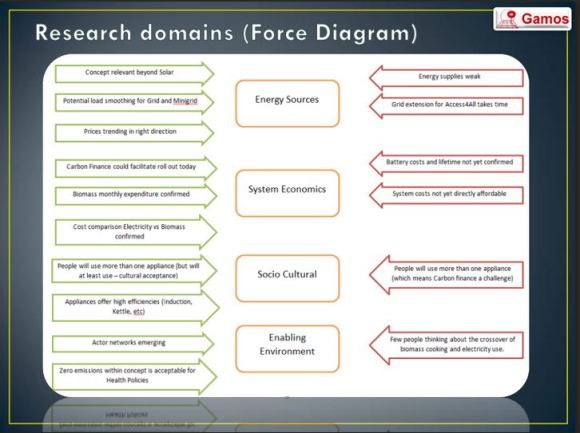The purpose of this blog is to stimulate debate among actors working with policy and practice in sustainable energy. It draws attention to the 3 Billion people who continue to use solid fuel (biomass, coal or dung) for their cooking needs, and suggests that this ongoing need for clean energy might now be filled by a solar electric system. It argues that the price of solar panels, batteries and simple electric hob equipment has come down significantly over the last 18 months, and a tipping point has been reached.
The cost of the solar electric system is now within reach of African and Asian households. Based on UK retail prices, a solar electric cooking system could be brought together for $350. Prices are based on 100Watt solar panel, 100Amphr deep cycle battery and a 500Watt electric hob with appropriate controllers. Allowing for mass production and with a little effort, even at todays prices one might bring this down to $250 retail in Africa and Asia. Such a system could be a cooking resource for a small family.
At least half of the 3 Billion spend more than US$8 per month per household on cooking fuel.
This suggests that the above system could achieve a payback in just over two years. It is not just falling costs that contribute to the tipping point. Business models combining leasing with microfinance have become well proven. Machine to machine (M2M) capabilities for controlling home systems has enabled service delivery approaches and mobile payments platforms have simplified repayment mechanisms. We note that the successful adoption of solar electric cooking will depend on more than costs and technology. In many cultures, men take decisions about capital equipment while women carry the main burden of solid fuels— any intervention by public or private sector to encourage this product will need to take this into account. Also, while recent advances in battery technology mean that affordable deep cycle batteries are now available, battery lifetime remains a challenge particularly with rapid discharge. So there is work to be done—technical and social research. However by 2020, after research has been conducted and an appropriate commercially robust integrated system has been designed and sold at scale, the overall cost is likely to halve again!
Our scan finds no evidence that development institutions or private sector are currently considering this possibility, this solar electric cooking. This is possibly because, even 18 months ago, the cost of such a system was nearer $600, which was unlikely to find a market among the 3 Billion. The direction of the cost curve suggests that now is the time to discuss the idea, to commission designers to create integrated systems, and to explore partnerships that can take the production and distribution to market and to scale, in a gender sensitive way.
